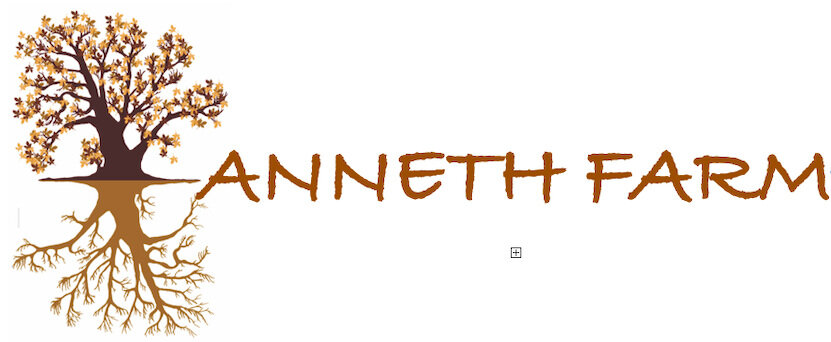Spoiler alert: This blog has very little to do with farming!
OK - Spending 35 years as a medical professional has made me value science and the power of evidence, 4 years of farming has made me practical, but both have forced me to see the value of being the non-anxious presence in the room (or barn or sheep pen or paddock as the case may be). So this morning after I received many texts from family and friends asking me for the “truth” about the Covid-19 virus, I realized that despite a vast amount of daily information in the media and on social media, there was a distinct absence of both the scientific and the practical. There is now so much information out there that is untrustworthy, it is tempting to trust nothing.
I just read a great quote on this subject in my church’s newsletter : “As the world is becoming increasingly aware of the impact of the COVID-19 virus, we believe our best practices will be to respond in self sacrificial love, and to resist the twin temptations of wilful ignorance or reactive fear”.
Wilful ignorance will stand in the way of an incredible opportunity to change the course of this infection, while reactive fear will create chaos, immobilization and helplessness.
First, lets get rid of the rhetoric.
This is not influenza. Covid-19 has a longer incubation (symptom free) period and a higher mortality rate. It is not a cold. Read what the World Health Organization says:
“While the range of symptoms for the two viruses is similar, the fraction with severe disease appears to be different. For COVID-19, data to date suggest that 80% of infections are mild or asymptomatic, 15% are severe infection, requiring oxygen and 5% are critical infections, requiring ventilation. These fractions of severe and critical infection would be higher than what is observed for influenza infection. “
So:
This Covid-19 virus will and should change how we live our lives in the weeks and months ahead. Why? Because every decision you make should be based on the answer to 2 questions:
1) Will this affect my own personal overall health and wellness? and
2) How will this affect the ability of the health system to care for people who need a high level of care?
For most people the answer to (1) is - “not much - most young healthy people have low odds of becoming very ill therefore I will ____________”. (you can fill in the blank - go to that party , fly to Paris etc)
But the answer to 2) is really the key to how we can all change the course of this Pandemic. We as Canadians (based on the current knowlege we have of this illness) could expect from 40-70% of our population to become infected. (40% would be approximately 15 million people). 15% of those will need hospitalization and oxygen (That’s 2.25 million ) 5% would need complex intensive care and ventilation to survive. That is 750,000 people. Number of intensive care beds distributed across Canada (in over 200 hospitals)? Approximately 3500. That’s quite a mismatch.
So if the virus spreads quickly? We will have the situation Italy is facing https://www.youtube.com/watch?v=9mrPHO-nkVE and that is the shown by the orange peaked curve above. 750,000 people needing intensive care quickly over a matter of weeks. This would result in a completely overwhelmed healthcare system in which draconian decisions are made as to who gets the last ventilator. And although this disease mostly affects patients who are elderly or have pre existing illness, the word “mostly” doesn’t mean much when you are dealing with these overall numbers- many younger patients presented with severe illness in italy too.
OK enough of the doom and gloom - here is the good news. We can absolutely change this future but that means we would have to SLOW DOWN the spread of the virus so the system can breathe. That means all the basics; hand washing, no face touching, self isolate when you are sick, avoid handshakes and contact if at all necessary. But there will be additional decisions that, while they won’t affect affect our personal outcomes, could determine life and death for our actual health system. These are decisions like restricting travel ( and not just if you are sick) and making very judicious choices about how important it is to go anywhere where you will be within 6 feet of other individuals, especially group gatherings. (Social distancing). A friend of mine called this “putting speed bumps in front of the Covid -19 virus.” And that will get us onto the more favourable blue curve above. People will get sick at a slower rate, enabling health resources to keep up.
Having said all this, gaining benefit from this level of community prevention is certainly not an “all or nothing” phenomenon. If only some of our population makes some of these preventative choices some of the time, we will still be ahead of the game. This is where the love comes in. It is impossible to know the full social, economic, and emotional impact of these measures for any single individual, so It is as unhelpful to shame someone for deciding to go on their long awaited vacation as it is to shame them for doing a huge grocery shop in case they are called upon to self isolate. The greatest gift we can provide to those who ask us what to do is to provide information without judgement.
In the end, compassionate encouragement may be the greatest antiviral drug we have.
I warned you this was not about farming.

